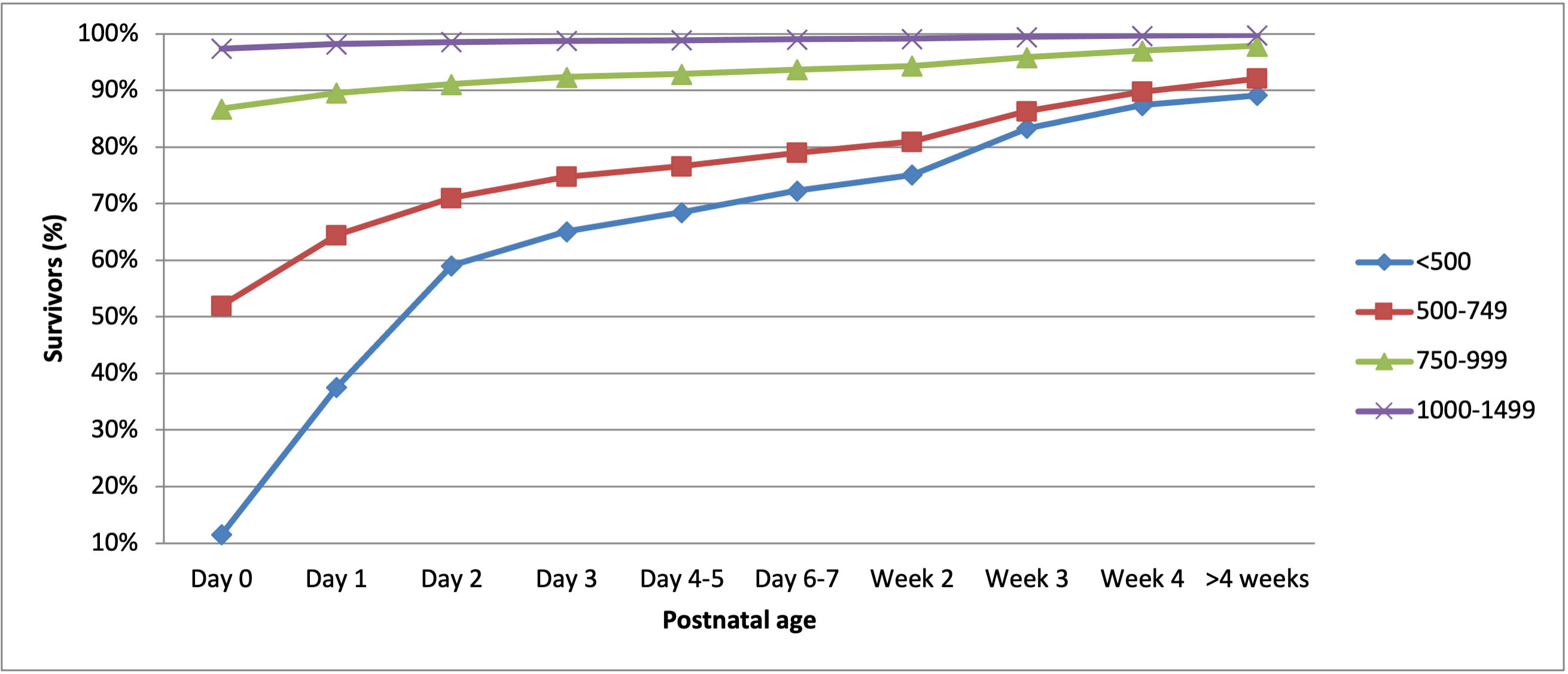Neonatal-Perinatal Health Care Delivery: Epidemiology/Health Services Research
Neonatal-Perinatal Health Care Delivery 4: Epi/HSR Utilization, Cost, Outcomes
788 - Postnatal Survivability in Very Low Birth Weight Infants, 2001-2018
Publication Number: 788.248

Dinan S. Abdelatif, MPH (she/her/hers)
Research Coordinator
The George Washington University Hospital
Alexandria, Virginia, United States
Presenting Author(s)
Background:
Very low birth weight (VLBW) infants’ survivability has increased with increasing treatment options.1-4 Day-by-day postnatal survivability in VLBW infants has been examined in infants born between 1997-2004.5 Results showed that those who survive the first few postnatal days have a better chance of living.5
Objective:
This study aims to develop daily postnatal survival rates of VLBW infants. It will determine the postnatal survival odds of VLBW infants at various postnatal ages for different birth weight and gestational age categories. It will also examine trends in the survivability of VLBW infants born between 2001 and 2018
Design/Methods:
De-identified datasets provided by the National Inpatient Sample and Kids’ Inpatient Databases were used to identify the study cohort of VLBW infants born between 2001 and 2018. Infants were categorized into weight (< 500g, 500-749g, 750-999g, 1000-1499g) and gestational age (< 24, 24, 25-26, 27-28, 29-30) groups. Postnatal survival rates, mean age at death, and length of stay for each category were calculated. The Mantel-Haenszel X2 test and regression analysis models were used to examine significant trends.
Results:
The overall mortality for VLBW significant decreased from 16.34% in 2005 to 13.56% in 2018 (p-value < 0.001). The trend is consistent among different weight and gestational age categories. The overall mean age at death did not significantly change but the length of stay increased from 43.83 to 57.21 days from 2001 to 2018.
Conclusion(s):
VLBW infants who survive the first few days have a better chance of survival. Their mortality decreased from 2001 to 2018.

.png)
